Since the two instrument makers, Tron Gundersen and Herman Løken, established their company in Christiania in 1899, the company has developed and produced products for the construction and engineering industry. With their uncompromising demands for precision and quality, they built a solid reputation both domestically and internationally. To this day, the company remains one of the few that can truly call itself an exporter of Norwegian technology within our industry. Up until the early 1980s, parts for measuring instruments were milled and turned out and then assembled into finished products here at our workshop. Even today, we continue to have a fully equipped workshop with highly skilled personnel who perform repairs, adjustments, and inspections of all types of construction lasers and leveling instruments. Products from times past are displayed in our booth to remind us of the legacy we uphold from Tron and Herman. We are forever grateful to them.
Three generations continued the business in the spirit of the founders. Innovation and creativity, combined with knowledge and good organization, resulted in many inventions and patents over the years. In 1938, the construction of what would become the largest analog computer of its time began. With its impressive capacity, it became a sought-after prize for the Germans at the start of World War II. They envisioned using the computer for, among other things, the calculation of ballistic trajectories. Fortunately, it was saved and is now stored at the Norwegian Museum of Science and Technology in Oslo.
The development in the construction and engineering industry has progressed rapidly. Since Jan Floberg purchased the company in 2000, the product portfolio has gradually changed, and today, our core product is our self-developed machine control system with the "Nynorsk" name, Digpilot. After having exclusive rights to an English machine control system for excavators for a few years, Jan believed in 2006 that he could develop his own system to surpass what was available at that time. He hired skilled developers and got started. The first milestone was a 2D system that could use lasers or fixed markers as references. This was ready for sale in 2008, and Digpilot was the first system to offer wireless sensors with rechargeable batteries. The sensors were produced by our trusted partner, Hapro Electronics AS, in Hadeland. This product sold well in Norway, Sweden, Denmark, Germany, the Netherlands, and Australia, and to this day, we continue to receive orders for spare parts for these first systems.
In parallel, G&L developed its first GNSS receiver, which was ready for sale in 2012. This was developed and produced in close collaboration with Hapro in Hadeland. After extensive testing and optimization, it was now possible to achieve centimeter-level accuracy at the bucket tip of excavators and bulldozers using satellite positioning and correction signals via the internet or a base station with radio. Rechargeable sensors brought both advantages and disadvantages. The large contractors who operated excavators on shifts naturally wanted permanently mounted sensors with cables, and the first Digpilot CAN Bus sensor was ready for sale in 2017.
In 2019, it was time for a generational shift. Erik Floberg, Jan’s son, took over as CEO. Coming from the offshore industry, he saw the potential in the existing technology but quickly realized that the market had evolved. Features that were once considered revolutionary had already become standard expectations for users, and the focus had shifted to user interfaces, graphics, and, not least, data flow between machines, stakes, and offices. A strategic partnership was formed with GeoNord AS, based in Alta, and Digpilot was synchronized with their Norwegian-adapted stake solution, RigelMap, as the standard cloud solution. With support from Innovation Norway, the Norwegian Mapping Authority, Bane Nor, and contractors Magne Sveen AS, Volda Maskin AS, and Totalprosjekt Namskogan AS, development of Machine Control 2.0 began. G&L developed a highly compact circuit board for what is now the market’s lowest and lightest angle sensor. This sensor is gyrostabilized, multi-axial, and ultra-fast, with programmed filtering and enumeration algorithms for easy replacement of damaged sensors. At the same time, we selected the most powerful and robust tablet available, Juniper’s Mesa Pro with a docking station.
The source code was completely reviewed and restructured in 2020. In close collaboration with Sarepta Studio AS, a gaming company based in Hamar that develops modern games for the web, PC, and PlayStation, we developed what today provides users with the best graphics and interface on the market. The details of the machine and terrain give the operator a unique understanding of where they are and where they need to go. This makes the excavation job more efficient, and everyone benefits from reduced time, emissions, energy consumption, incorrect digging, and damage to existing infrastructure, while the work is documented for all time and the accuracy of completed work increases.
With solid investors behind us and new distributors in Norway, Sweden, Poland, Lithuania, Germany, Iceland, and Oceania, we look forward to the future. We will always strive to offer the most user-friendly, robust, and reliable machine control system at a competitive price.

